
How to Create a Product Launch Plan for SaaS Companies?
There’s a vast gap between a great idea and bringing that idea into reality. And, there’s no better way to end that gap than a product launch plan.
If you get your product launch plan wrong, all the hard work and effort of building your product might be for nothing.
In this article, we’re going to make sure that doesn’t happen. We’ll give you the step-by-step checklist you need to create a solid product launch plan – one that will guarantee a successful launch.
Ready to get started?
Get The Insights!
The fastest way to learn about Product Growth, Management & Trends.
What is a product launch plan?
A product launch plan is typically a document or visual reference point outlining the steps in bringing a new product to market.
What are the different product launch phases?
Product launch planning includes the following sections:
- Pre-launch phase. This is all about activities that’ll set you up for success. You’ll define your launch strategy here as aligned with your broader marketing strategy. The critical factor here is to nail the go-to-market strategy before you start.
- Launch phase. This is all about actually getting your product live: it’s the point your launch strategy becomes reality. Ultimately, you want to launch your product to potential customers successfully. The launch phase is where you kick off a whole array of launch activities and begin your campaign in earnest.
- Post-launch phase. There’s not really a ‘final stage’ of a product launch. You need to keep going: assess your performance, reflect on what went well and what didn’t, and use that knowledge to refine any future launch plan you put together. Your sales team will be in overdrive.
A well-crafted product launch plan can help ensure that a new product is successfully launched – and ultimately achieves its business goals. Any product launch plan will require extensive market research, careful planning, and execution – it’s no mean feat for any product manager.
Different types of product launch plans
Context is everything.
While the key details of each product launch will be unique – from the target market, the launch timeline, the distribution channels, and more – there will typically be common types of launch plans you can draw inspiration from.
- Soft launch plan. Sometimes referred to as a ‘dark launch’, this involves releasing the product to a limited audience before making it more widely available. They are often seen as a much less risky way to launch a new product than a traditional launch: you can get user feedback and make improvements to the product without it being too out in the open.
- Minimal launch plan. This is another way of limiting the scope of your release: releasing the product with a limited set of features and functionality. This is done to reduce the risk and cost of the launch, while still allowing the company to gather feedback from users and make improvements to the product before it is released more widely.
- Full-scale launch plan. A full-scale launch involves releasing the whole product to the general public with all of its features and functionality. This is the most common type of product launch plan, typically used for products that are considered to be mature and ready for the market. You’ll have the widest reach, but of course, you’re more at risk of external factors.
Steps to create a successful product launch plan
Although every product will be different, a successful product launch will typically have a common series of steps. Let’s break them down phase by phase for the product team to follow.
Pre-launch phase
As discussed, this is the stage where you get yourself and your team organized. It’s all about devising your marketing plans, gathering info, and preparing for what’s to come.
“You can’t build a great building on a weak foundation.”
Here’s how to nail the pre-launch:
1. Conduct market research and competitive analysis
The better you understand your target market, the more likely the chance of launch success.
Market research gives you a fantastic opportunity to learn from the mistakes of your competitors and spot opportunities for differentiation. You draw on success stories, figure out what might work for you, and help the team stay focused.

2. Dig into your target user personas
Once you understand the target market, you can focus more deeply on the individual target customer.
A persona is a detailed visualization of your target audience, including their challenges, their motivations, their pain points, and ultimately how your product can help
Don’t build personas based on guesswork and assumptions: gather valuable data through research, focus groups, direct surveys, and observing behavior.
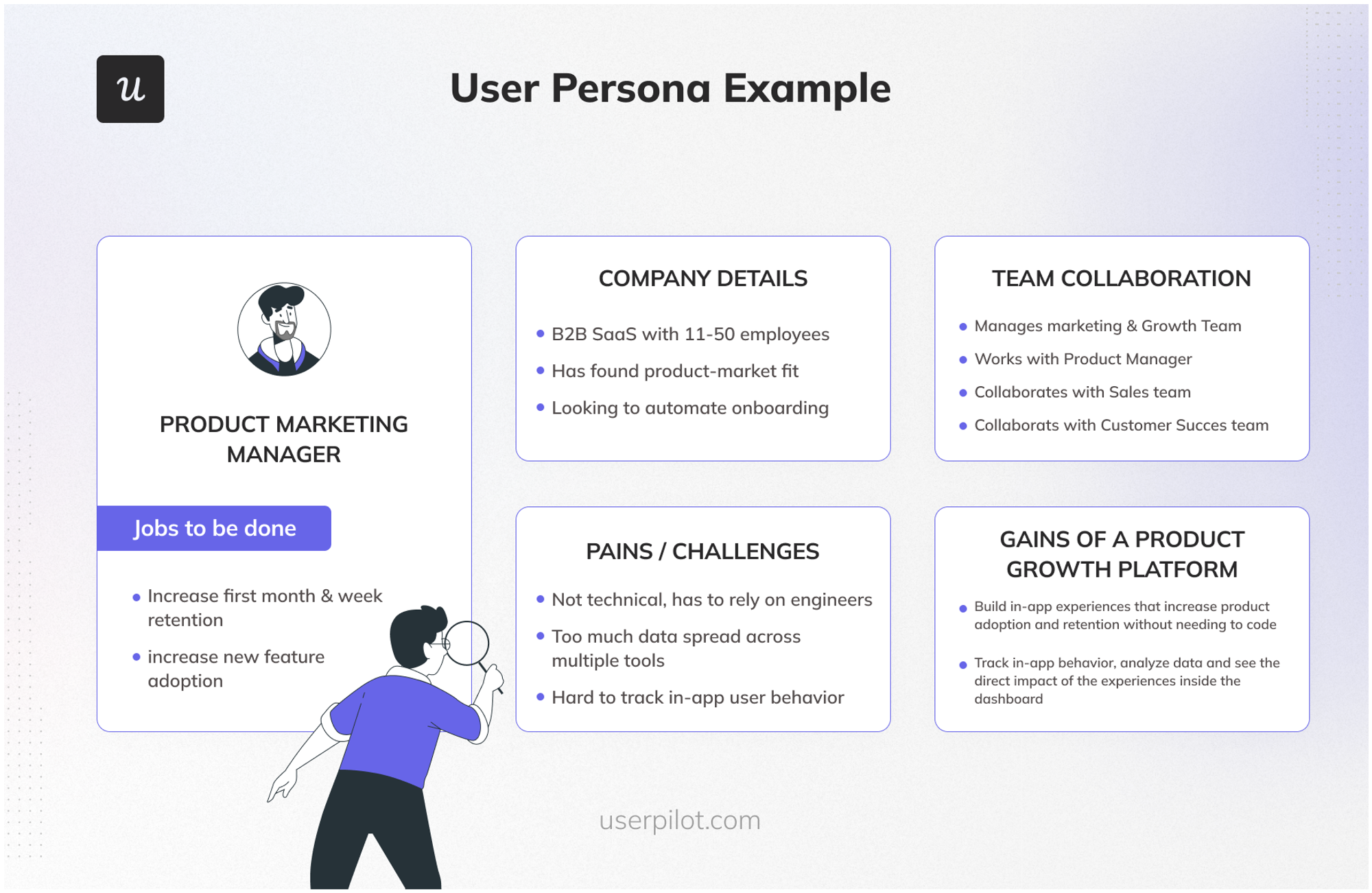
3. Define your value proposition and develop a messaging strategy
The information and thinking you’ve worked through will help you solidify your core product positioning, define a unique value proposition: and build a messaging strategy around that.
Positioning is a subtle and tricky thing to get right. Good positioning statements capture needs, user requirements, differentiating factors, and how features map to outcomes. This then helps in formulating key messages that are promoted in the product’s launch.
4. Set SMART goals and tie them to key performance indicators
Product launches shouldn’t be random: they’ll typically tie to a broader business strategy. To make sure you nail your launch, you should be able to clearly articulate the business objectives they contribute to.
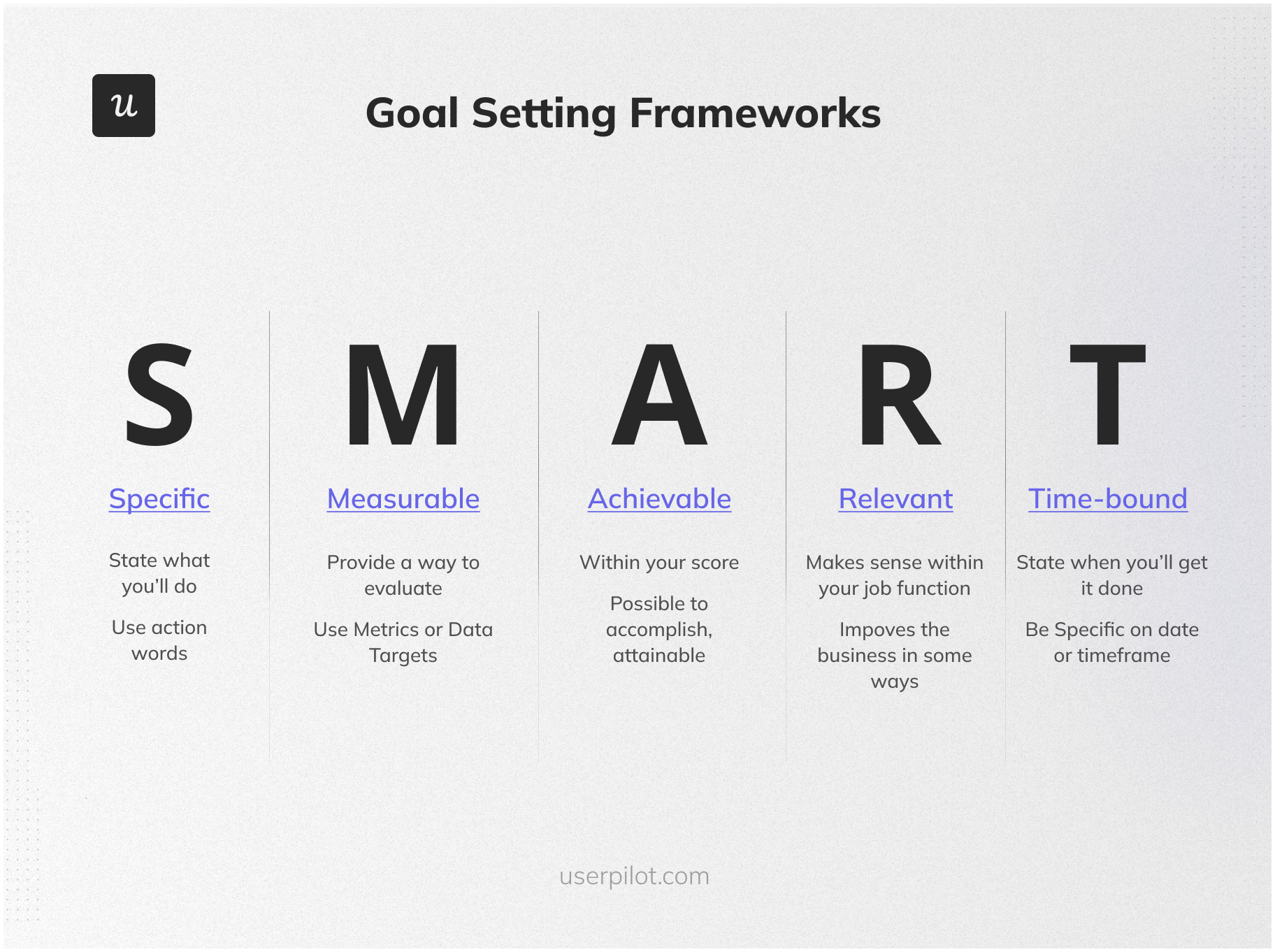
SMART goals are a fantastic way to go.
Remember the old adage from management expert Pete Drucker:
“What gets measured gets managed.”
Here are a few examples of goals you might set when launching a new product:
- Improving customer satisfaction scores by X%
- Increasing sales by X% in the first month
- Increasing sign-ups by X% in the first three months
Don’t just think short term: your goals should be measurable so that you can monitor your progress over time and work out if you’re moving in the right direction.
Some KPIs that might help you:
- Customer acquisition cost
- Sign-ups to PQL conversion rate
- Customer activation rate
- Trial to paid conversion rate
- Customer engagement score
- Retention rate
- Customer Satisfaction Score
- Net Promoter Score
5. Develop a product launch marketing plan
By now, you’ve got a solid understanding of the market, your individual users, your value proposition, and how you’ll measure success.
Building a product launch marketing plan helps you gather all of that information and translate it into an actionable plan. Choose your marketing channels, allocate a budget, decide where you’ll focus your efforts, and how to chunk the work up.
A good plan should have critical milestones you can measure progress against and help drive the team forward.
6. Create promotional marketing materials to generate buzz before the launch date
You can’t just put a plan out there and expect it to work automatically.
It takes type and effort to build hype. That might be through blogs, social media campaigns, other forms of digital marketing, social media posts, or even influencer marketing.
Which will deliver the most success depends on a huge range of factors: you need to experiment to figure out what works in your context.

7. Perform beta testing before the product launches
Beta testing is a powerful concept.
It’s essentially a dress rehearsal: a chance to release real features and put them in front of real users but without the risk of a mass launch. You’ll typically also spot any potential showstopper bugs before they escape into the wider user base.
Another benefit is that beta users will typically be power users: interested, engaged, and tech-savvy. They’ll provide great feedback, help inform key elements of your launch – and ultimately help the campaign succeed.

8. Decide on the launch date, timeline, and budget
The final step – and an important one!
This is where the intricate details come to the fore: logistics can trip any launch, particularly when you’re dealing with various complex tech stacks. You need to resolve dependencies, get the sequencing right, and ensure there are no blockers in the way.
Done right, this will have a huge impact on launch productivity.

Launch phase
You’ve laid the foundations. Now we’re at the main event: the launch itself.
9. Launch your product on multiple platforms
The most important thing here is not to rely on a single platform as the only place you launch your product. You need to increase awareness however you can: Indiehackers, Reddit, LinkedIn, and ProductHunt are all excellent examples.

Post-launch phase
Once you’ve got your product out there, and successfully got it in front of users, it’s time to move onto the post-launch phase.
10. Evaluate the performance of your marketing campaigns
If you don’t reflect on your performance, you’ll never improve.
You need to carve out the time and effort to analyze your marketing efforts, compare your performance against your objectives, and if you fell short – identify where.
For example, let’s say you launched a series of ads on Facebook. You might have set a goal of converting 10% of viewers who came across it: if you only generate half as many sign-ups as you planned, you shouldn’t continue on with a flawed strategy.
Maybe you could experiment with format, content, messaging tone, and platform – there are many ways to tweak your approach. The important thing is a mindset of evaluation and experimentation. A/B testing can work wonders here.
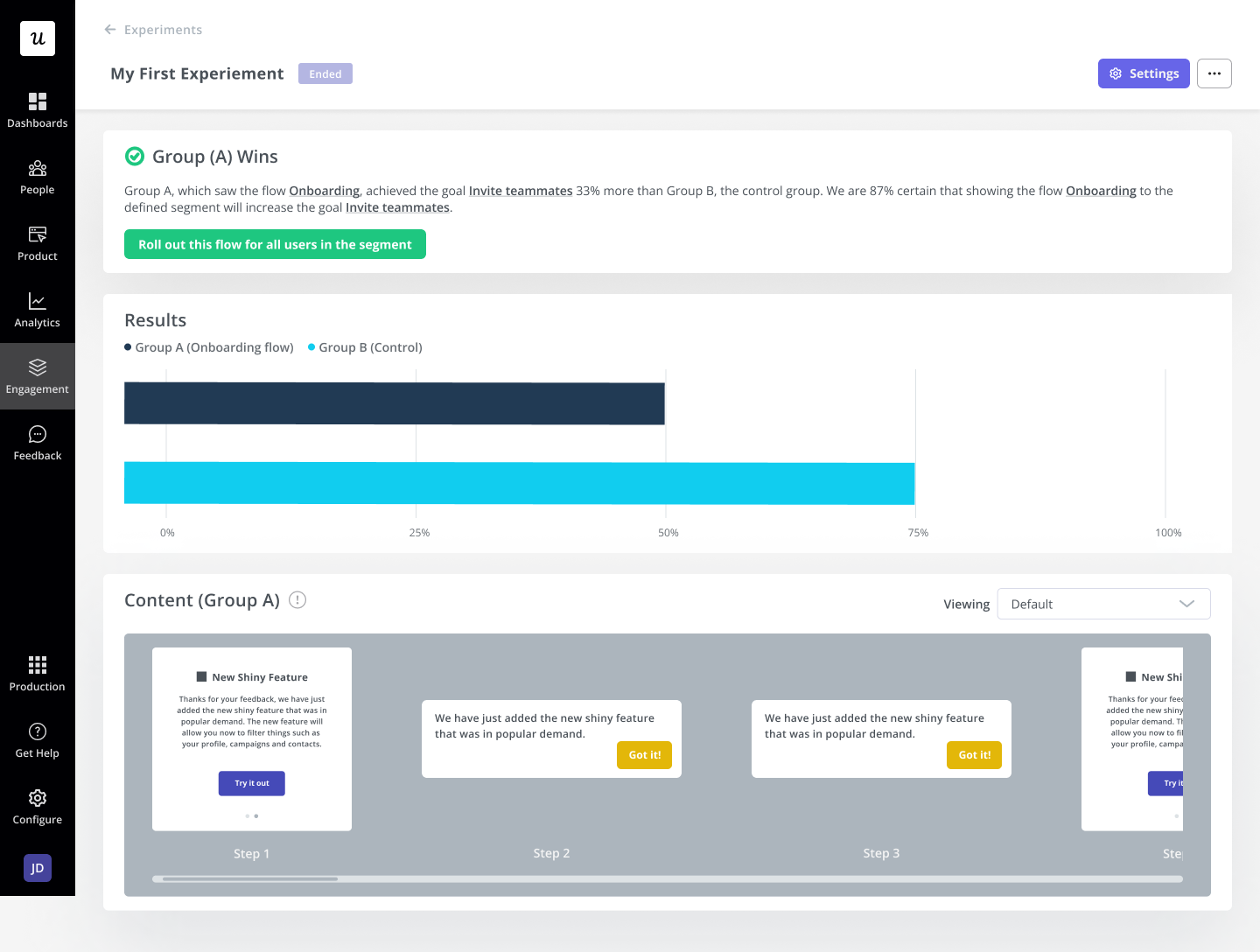
11. Collect customer feedback to improve your product
Gathering direct user feedback – and using it to target enhancements – is one of the very best ways to improve customer satisfaction.
It’s great product practice to have a short, tight feedback loop between gathering ideas from your customers and transforming them into reality.
It means you’re not relying on guesswork or hunches to define your roadmap: everything you work on should be clearly linked to a direct user need.
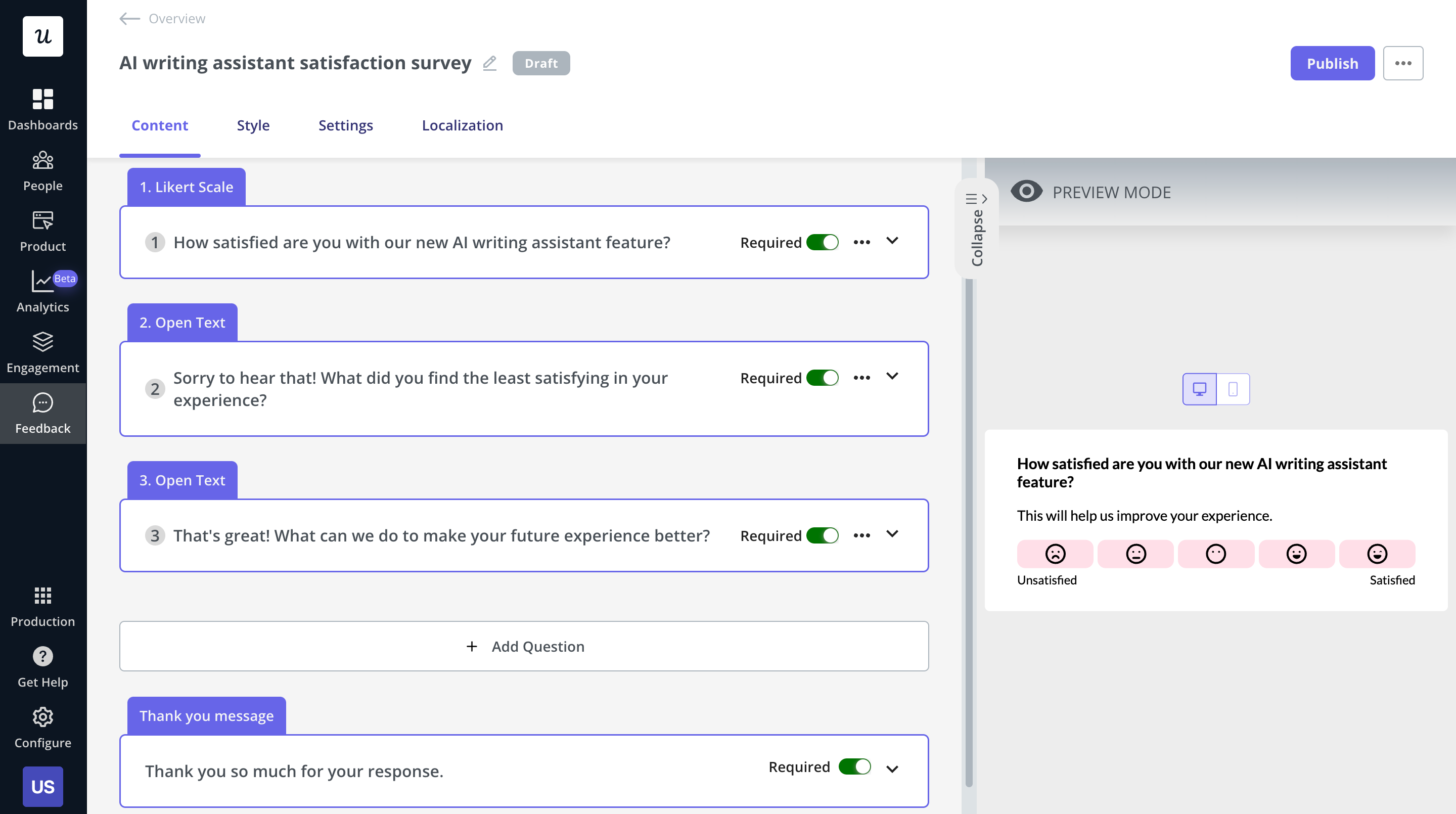
12. Analyze in-app customer behavior for actionable insights
Next, you should use analytics to better understand customer behavior.
What’s the usage frequency of a particular feature? Where are you seeing drop-off points in the journey? Which features generate the most friction?
All of these actionable insights give you clues: you’ll know which areas to investigate further, and where to focus your efforts next.
Funnel analysis, for instance, helps you identify friction and drop-off points along with total conversion rate and time.
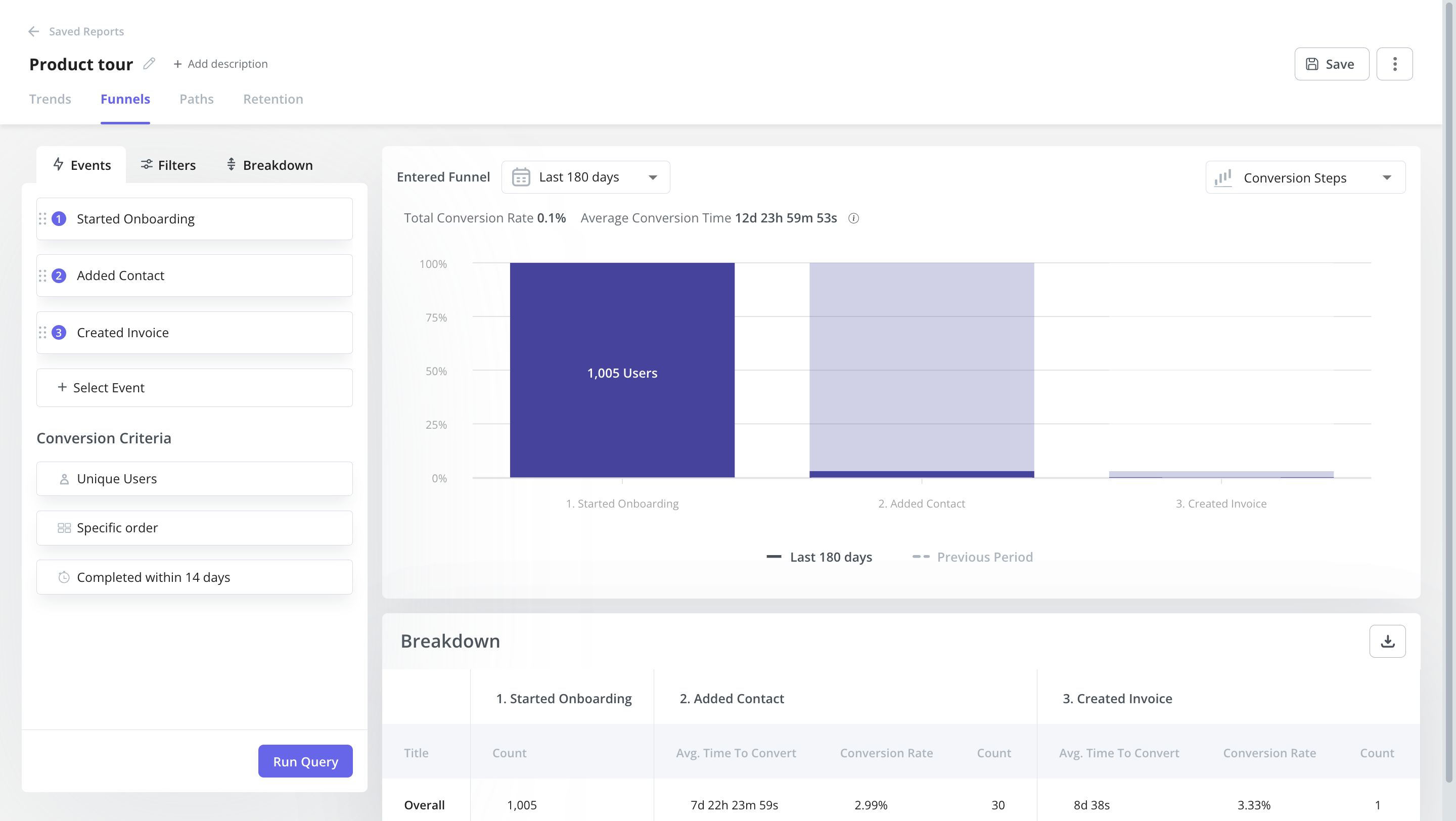
13. Create a retention marketing strategy and focus on keeping the acquired customers
A campaign launch – and capturing new customers for a venture – is of absolutely no use if you don’t manage to keep hold of the customers you’ve already acquired.
It’s a well-known fact that in the SaaS world, the cost of acquisition far exceeds the cost of retention: most companies make money from retaining their users, rather than constantly battling churn.
To get this right, you need to make sure you include retention strategies right from the start rather than trying to shoehorn them in at the end: they should be considered in the earliest possible draft of your product launch plan.
Product launch checklist to follow
Before launching your SaaS product, it’s crucial to follow a comprehensive checklist to ensure a successful and impactful launch. From understanding your customers to executing your go-to-market strategy, each step plays a vital role in maximizing your product’s potential in the market.
- Conduct thorough customer research to gain insights into their needs and preferences.
- Develop a clear and compelling positioning statement that differentiates your product from competitors.
- Pitch your positioning statement to stakeholders to gain buy-in and feedback.
- Create a cohesive branding strategy that reflects your positioning and resonates with your target audience.
- Plan your go-to-market strategy, including pricing, distribution channels, and marketing tactics.
- Set specific, measurable goals for the launch to track success.
- Develop promotional content, such as website copy, blog posts, and social media updates, to generate excitement.
- Conduct beta testing to gather feedback and identify any issues before the full launch.
- Set up distribution channels, including your website, social media channels, and third-party platforms.
- Train your sales, marketing, and customer support teams on the product and key messaging.
- Execute your go-to-market strategy, including announcing the launch and activating marketing campaigns.
- Evaluate the launch performance against your goals to identify successes and areas for improvement.
How Userpilot can help you with your product launch strategy
None of this is possible without the right tool for the job.
Userpilot is a powerful product adoption platform that can help you nail any product launch. Here’s how it can help.
Segment customers for a personalized experience
You shouldn’t treat your customers as one, homogenous group. Typically, they’ll fit into clear categories or ‘segments’ – that might be based on acquisition channel, industry, the date they’ve signed up, answers to welcome surveys, key jobs to be done, and more.
Userpilot can help you create fine-grained user segments, so you can trigger personalized experiences bespoke to each user group.
That’ll give you the best chance of delighting your customers – and hopefully retaining their business.
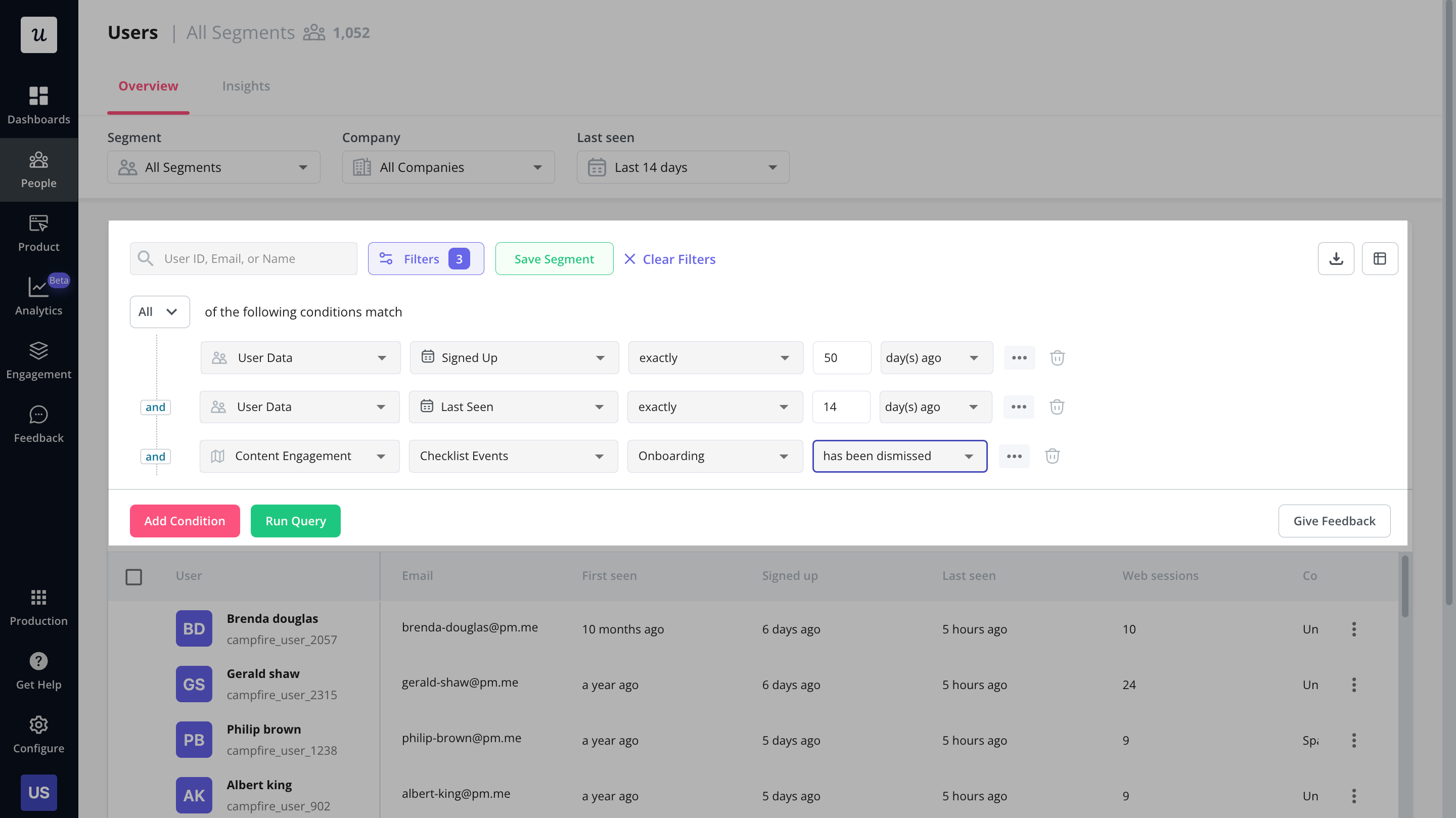
Create in-app messaging with different UI elements
Userpilot makes it simple to launch a whole host of different UI elements – so you can choose the best and most relevant option based on the context.
Examples of UI patterns to choose from include:
- Modals. An engaging way to fill up most of the screen and capture user attention – for example, for a new feature announcement.
- Tooltips. Provide contextually relevant guidance to help users figure out how to unlock value from your product.
- Slideouts. A handy way to share extra information with your users without detracting from the main customer journey.
- Checklists. Drive users toward the next most valuable action in a visually engaging, interactive to-do list.
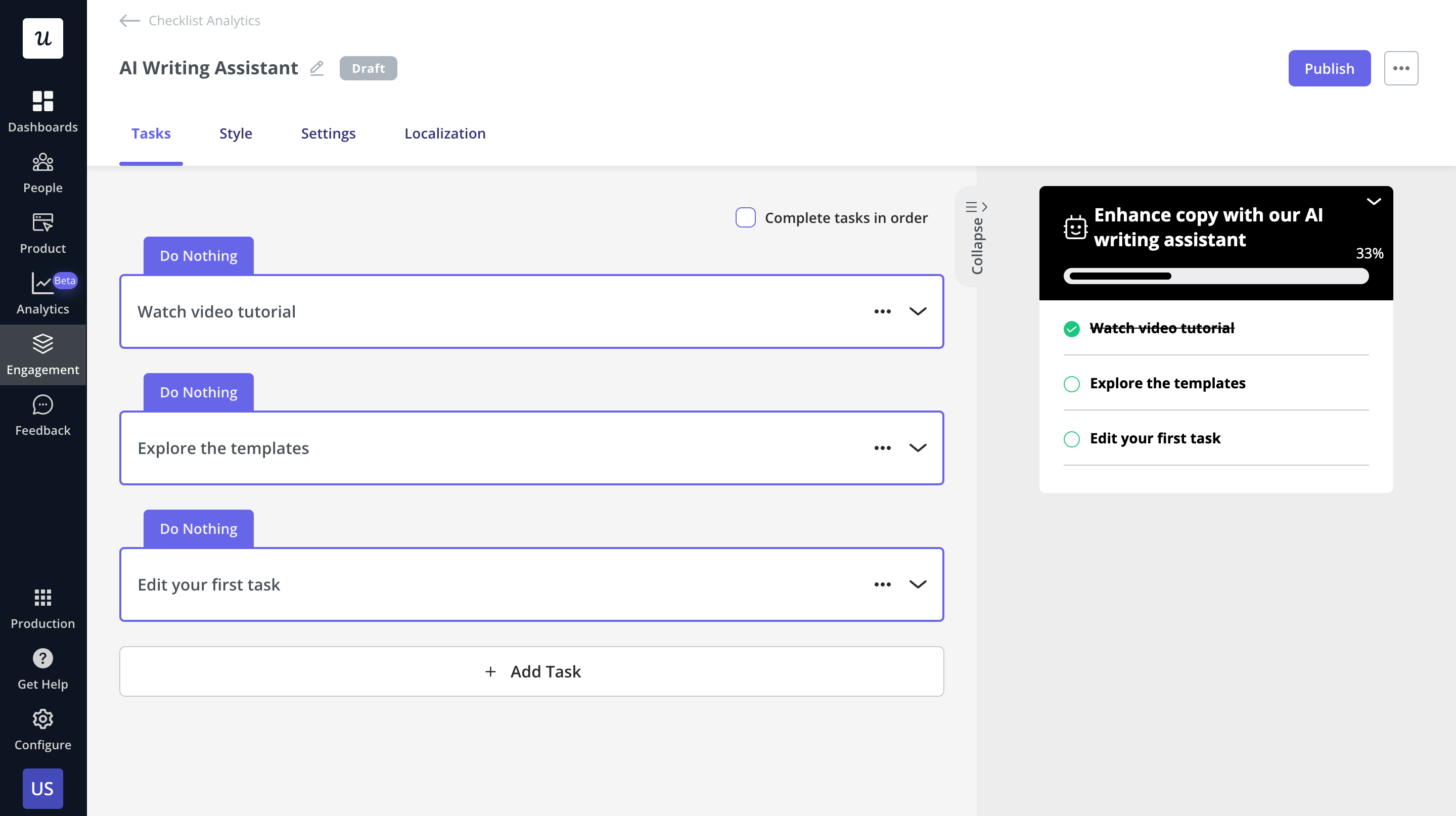
Collect customer feedback in-app
We’ve discussed how important user feedback is. Userpilot provides you with a huge array of customizable templates to get you off to a fast start.
Remember, you can trigger surveys contextually based on custom events: a proven way to gather feedback at relevant points in the user journey.

Conclusion
That concludes our in-depth guide to the world of product launches.
Hopefully, you and your marketing team have lots of useful information to absorb and apply to your own product: what a product launch plan is, how to put one together, different types of launches, and more.
If you want to get started putting an impressive product launch plan together yourself – and build product experiences code-free – simply book a demo call with our team, and get started!






